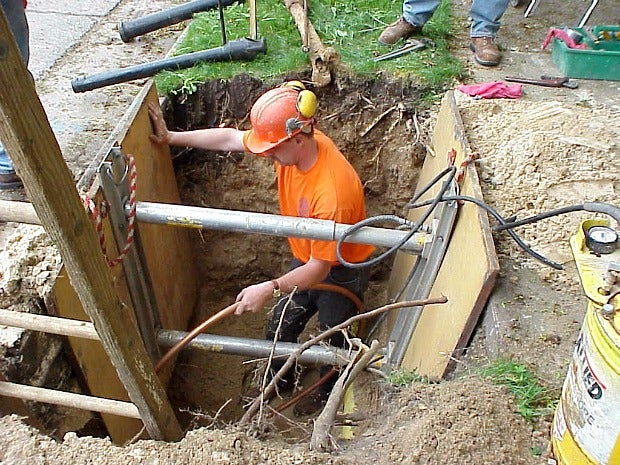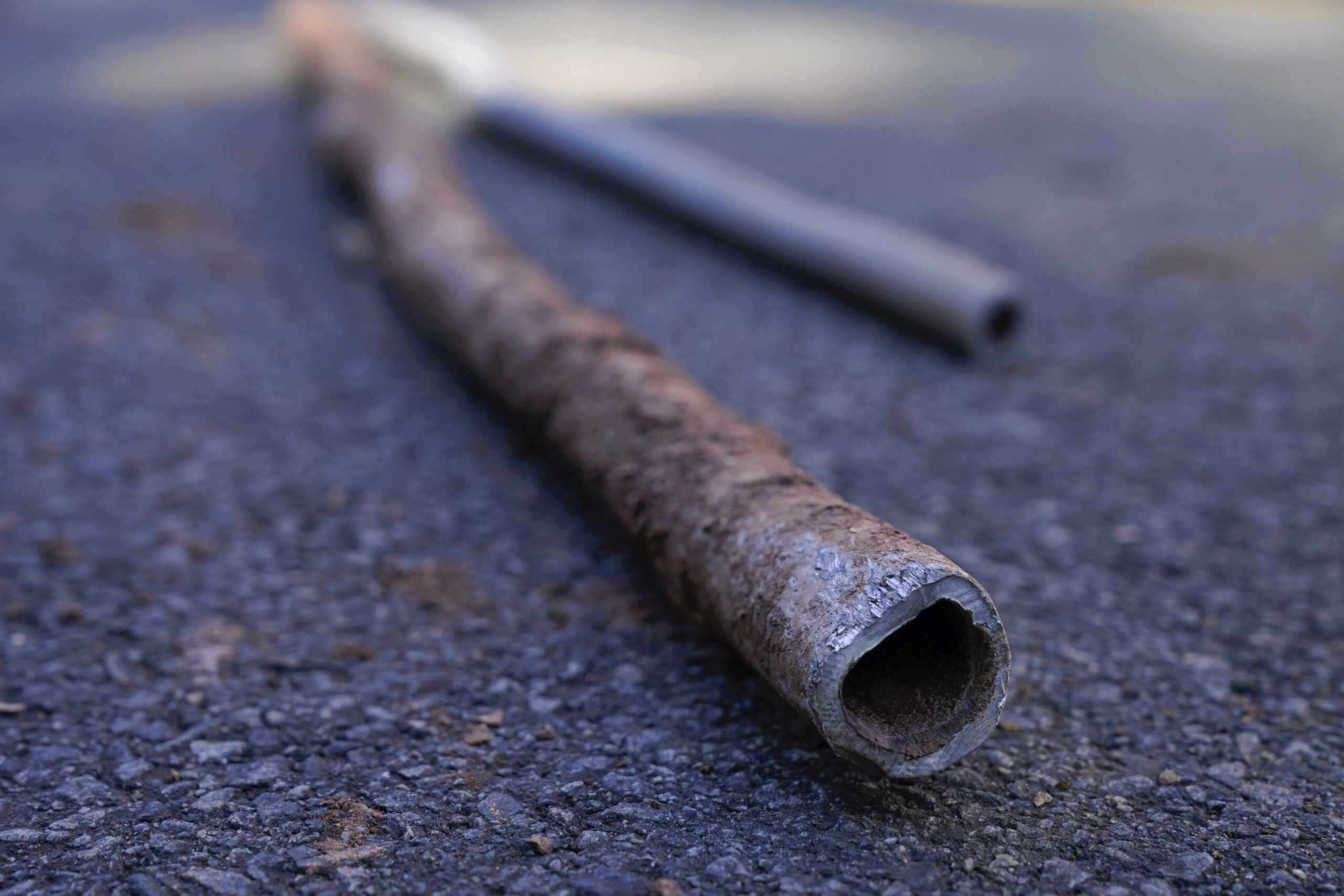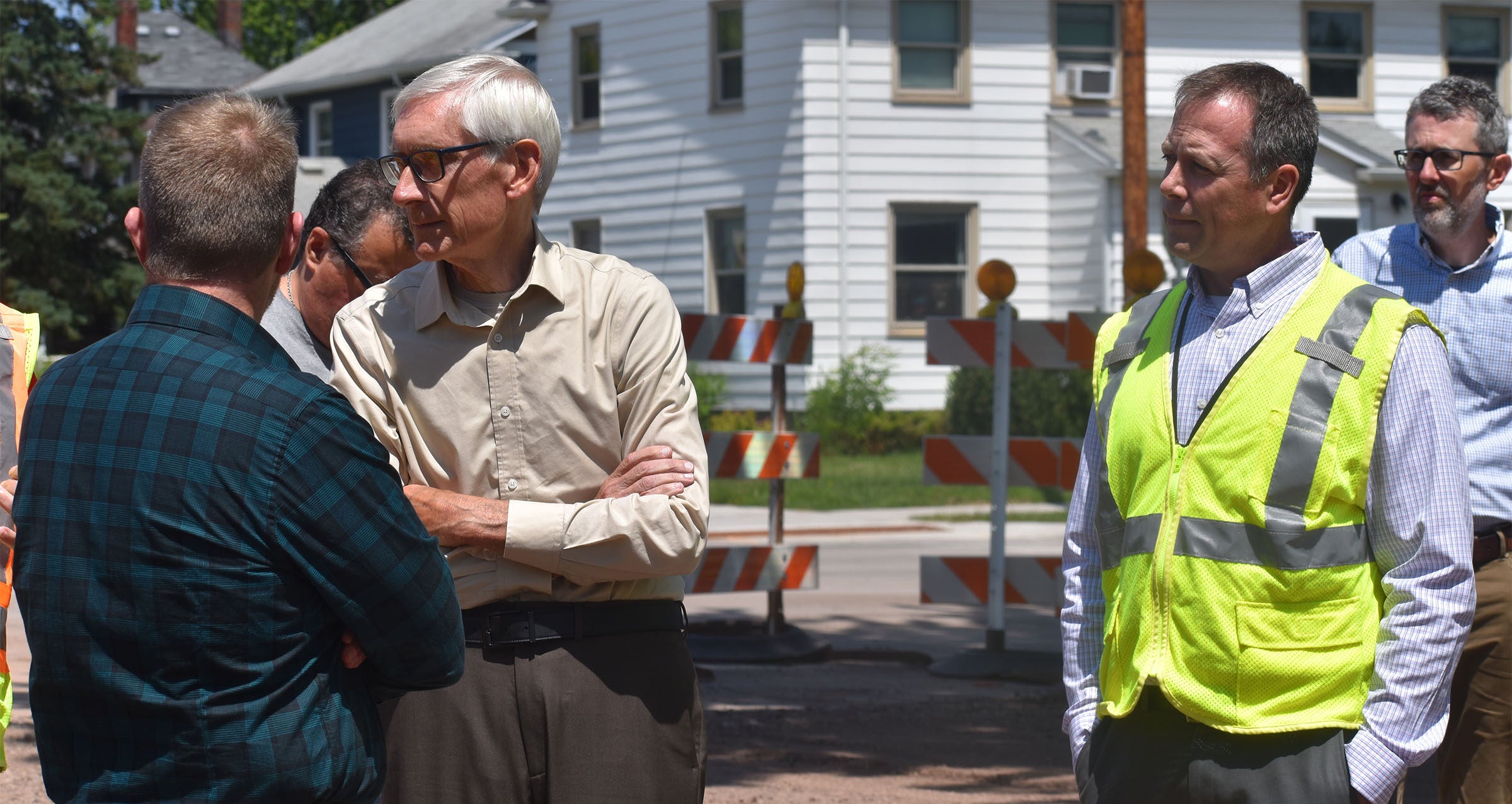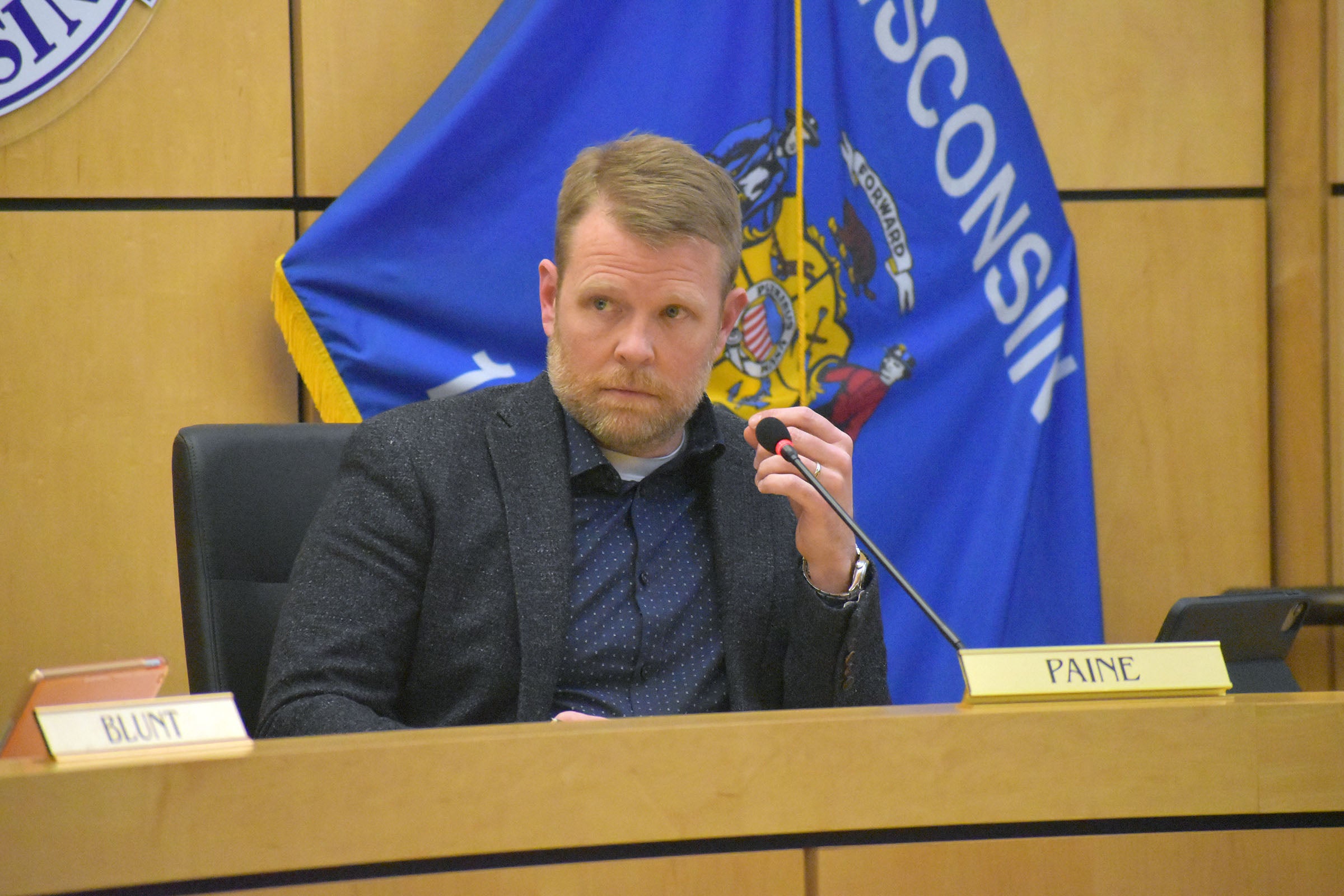A new program to help Wisconsin communities replace lead drinking water pipes will likely take out only a small fraction of those estimated to exist around the state.
Wisconsin’s municipal drinking water systems use about 176,000 lead service lines — the pipes that carry water from public mains to individual homes and other buildings — according to a U.S. Environmental Protection Agency estimate. Lead that leaches into drinking water from these pipes poses a major health threat for which regulations and treatment practices do not always adequately protect Wisconsinites. The high-profile lead poisoning crisis in Flint, Michigan, and an extensive series of reports by the Wisconsin Center for Investigative Journalism about more local drinking water problems, have amplified calls to replace more lead pipes with safer copper or plastic options.
On April 27, the Wisconsin Department of Natural Resources, which is charged with enforcing state and federal drinking water regulations in the state, announced an $11.8 million federally funded program to help municipalities replace lead service lines. The program will help some communities fill a crucial gap in their lead pipe replacement efforts.
News with a little more humanity
WPR’s “Wisconsin Today” newsletter keeps you connected to the state you love without feeling overwhelmed. No paywall. No agenda. No corporate filter.
Typically, a municipal water service line has two segments, one belonging to the water utility and the other belonging to the private property owner. The latter point presents a big obstacle, because Wisconsin’s Public Service Commission does not allow utilities to spend revenues from ratepayers on infrastructure improvements to private property. Moreover, it’s not necessarily easy to convince a homeowner to spend several thousand dollars to replace his or her segment of pipe.
Many Wisconsin cities replace the public segments of lead service lines during road construction projects, which saves on costs. But without buy-in from property owners, they’re left providing only partial replacements. This practice can actually elevate lead levels by disturbing lead deposits in a pipe. (Many water utilities add chemicals like orthophosphates to their drinking water to minimize the corrosion of lead pipes.) Additionally, connecting lead pipes to copper pipes creates an electrochemical effect that draws more lead into the water.
To address this partial-replacement challenge, the DNR earmarked funds for replacing the private property segments of lead service lines. They are not technically grants, but instead loans for which the state will forgive the principal.
Robin Schmidt, who heads DNR’s Environmental Loans section, believes communities using this money will then replace the utility-side segments with help from other funding mechanisms. “It wouldn’t be logical for them to come to our program and just get that portion of the private (segments),” she said.
Schmidt noted that any of the $11.8 million not claimed this fiscal year will carry over to the next. She admitted, though, that the funds aren’t nearly enough to replace all lead pipes in Wisconsin.
“We know we could quadruple this and still not meet the needs,” Schmidt said.
The cost of replacing a lead service line can vary depending on its length, how deep it is buried, and factors like the price of copper, but the DNR’s press release indicated that replacing just the homeowner’s side can average about $3,000. Several utility managers around the state also brought up that figure, as a ballpark estimate of the cost of replacing the public segment. And those are conservative estimates.
In fact, sometimes the homeowner-side pipe is more expensive to replace. Paul Hermanson, director of public works in Lake Mills, pointed out that the utility’s portion usually runs from the street to just inside the sidewalk. “Sometimes that portion from the sidewalk to the house can be quite long,” he noted.
Based on DNR’s $3,000 estimate, the base $11.8 million in funding would at best cover just fewer than 4,000 homeowner-side lead service line replacements, leaving about 172,000. Replacing all the lead service lines, on both homeowner and utility sides, could cost more than a billion dollars — again, that’s a conservative estimate.
Water Utilities Scrambling To Understand Program
Wisconsin water utility managers may not understand whether their communities will qualify for the funds. Municipalities have until June 30 to apply for funding in the state’s 2017 fiscal year, and Schmidt said the DNR will assess applicants’ needs by scoring them on a range of criteria, including local income levels and water quality testing results. She added that utility managers might not realize that the scoring used for this program is slightly different from scoring methods for other principal-forgiveness loans the agency offers. Language in its press release about funding “disadvantaged municipalities” may also lead some municipalities to assume that they are not qualified to apply.
“I’m not sure that communities are understanding that,” Schmidt said. “I just looked up Baraboo and they said they weren’t qualified, but I was like, ‘Uh yeah, actually you are.’”
When asked on May 3, officials in Wausau initially said they were pretty sure that their community isn’t “depressed enough” to qualify, and that while the city has economically disadvantaged neighborhoods, it could not seek funding specific to them. In fact, Schmidt said, Wausau’s median income level is low enough to qualify the city for the program, and that municipalities can seek funding for specific neighborhoods if U.S. Census data show economic hardships in those areas.
When told of Schmidt’s response, Deb Geier, utilities resource manager for the Wausau Water Works, said the city would look into applying. Had this misunderstanding not been clarified, the state program might have missed a big opportunity because Wausau has about 7,500 lead service lines — more than any other community in northern Wisconsin.
Wausau is making incremental progress on its lead pipes, replacing about 100 utility-side service line segments each year during road construction Geier said. However, she added that only one or two property owners per year decide to replace their segments to accompany the city’s work.
Janesville’s water utility superintendent, Craig Thiesenhusen, also said he was uncertain about his city’s eligibility, but expected the subject to come up in a water quality conference in Madison in May.
Schmidt said the DNR plans to do more to make sure local officials around Wisconsin have a clearer understanding of the program, with outreach efforts including email bulletins to utility managers and possible communication efforts in partnership with the League of Wisconsin Municipalities. The DNR has also released a detailed guide covering program specifics, but it is not clear whether many utility managers around the state have seen it.
“(Communities) should contact us if they’re not sure if they qualify, because many communities do qualify,” Schmidt said.
One potential reason for the confusion is that DNR officials only learned in late March that it would be able to implement this program. Essentially, the EPA announced then that it would give states more discretion in using federal funds for water infrastructure loans.
Schmidt said the DNR wanted to act fast to address the urgency of the lead contamination issue. “All we’re trying to do is be creative in terms of how we can help get the lead out of the system as quickly as possible,” she said.
Board members of the Wisconsin chapter of the American Water Works Association, a major professional organization in the drinking water world, found themselves exchanging surprised emails after the DNR announced the program, said section chair and Appleton-based water utility consultant Pat Planton.
“I don’t know if DNR’s program got a tremendous amount of vetting from the industry before it came out,” Planton said, emphasizing the program is a step in the right direction. “We didn’t know about it until we saw the email last week.”
In Wausau, Geier had a similar experience in email conversations with fellow members of the Municipal Environmental Group, a lobbying coalition of Wisconsin water utilities. She said other water officials around the state shared in her initial misconceptions about which municipalities are eligible for the funding.
“The confusion is the main thing,” Geier said. “I’m sure there’s others that read it the way I read it.”
Lead Problem Comes With Funding Barriers
If the DNR’s funding plan has a structural blind spot, it’s Milwaukee, which has an estimated 70,000 lead service lines. While the city has about 40 percent of the state’s lead service lines, it is eligible for just more than 6 percent of the new DNR funding. Urban Milwaukee editor Bruce Murphy pointed out this disparity, characterizing it as an instance of an attitude among state officials “that seems to be going out of its way to punish Milwaukee’s taxpayers.” An update to Murphy’s column includes a response from a DNR spokesperson, who said the program’s goal is “to help as many municipalities as possible fully replacing lead service lines.”
Under the program, a municipality of more than 500,000 people (Milwaukee is Wisconsin’s only city of that size) can receive up to $750,000. Based on the DNR’s conservative $3,000 estimate, that’s enough to replace the homeowner-side segments of 250 service lines. The city is already working on replacing its lead pipes, but estimates that it would cost at least $511 million to replace them all and possibly as much as $756 million.
In theory, Milwaukee could maximize funds from the program by targeting the neediest areas and working with plumbing contractors to achieve economies of scale. The Madison Water Utility was able to do the latter in its historic effort to replace all of its approximately 8,000 public and private lead service lines, said the city’s water quality manager Joe Grande.
“I think because our program was fairly large-scale, the plumbing contractors knew that there was this 10-year program, and some of them saw it as an opportunity,” he said. That effort still ended up costing Madison $15.5 million. (Much of that cost is in 1990s dollars, as the program began in 1995.)
Grande added that smaller Wisconsin cities taking advantage of the DNR program should work closely with plumbing contractors to get the most out of already slim budgets. “There is going to have to be a partnership with some of the local contractors,” he said, “and I think that effective partnerships can be made that could save the community some money.”
The issue of aging lead service pipes also illustrates the difficulty of financing infrastructure projects. In Madison, city officials wanted to add a surcharge to water bills to fund replacement work on private property, but the state Public Service Commission blocked that effort (and a federal appellate judge upheld the PSC’s decision in 2002). Instead, the utility got creative and funded the project with rental revenues that cell phone carriers pay to place transmitters on top of water towers.
Geier pointed out that one advantage of Wausau’s incremental approach — replacing the pipes during road construction projects — allows the city to spread the financial burden among several departments, including the streets department and sewer utility. This structure means that the drinking water utility’s ratepayers don’t have to shoulder the costs alone.
Green Bay has devoted about $10 million to replace lead pipes in about 1,700 homes. Green Bay Water Utility manager Nancy Quirk said the city is paying for that with economic development funds, including some of the excess sales tax money initially collected to help fund renovations at Lambeau Field. She said the utility will consider seeking funding through the new DNR program.
“I think that them recognizing that utilities need to have some help for the property owners of these older properties, to get the lead out of the ground, is commendable,” she added.
Planton of Wisconsin’s American Water Works Association chapter said he anticipates utilities will increasingly lobby state legislators and the PSC to give them more flexibility in helping property owners make improvements.
Utility managers dealing with lead in their own communities want to see that happen, too.
In Lake Mills, which has some of the state’s worst lead contamination problems, public works director Paul Hermanson said he “absolutely” plans to apply for funds under the DNR’s program. But he also wants regulators at the PSC to rethink those restrictions barring the use of ratepayer money for the private half of the lead service replacements.
“We’re very encouraged by it, it’s something we’ve been talking to the DNR about it for a long time,” Hermanson said. “The other component of this, that’s maybe getting lost in this, is we’ve also got to get the Public Service Commission involved.”
This report was produced in a partnership between Wisconsin Public Radio, PBS Wisconsin and the University of Wisconsin Cooperative Extension. @ Copyright 2026, Board of Regents of the University of Wisconsin System and Wisconsin Educational Communications Board.






